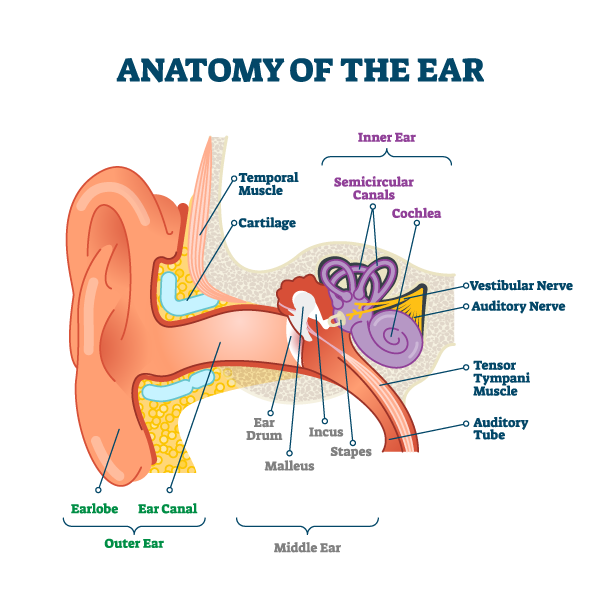How the Ear Works
The ear is a very complex sensory organ. It is designed to help us communicate with each other. When the ear works properly, we can hear a wide variety of sounds that range from very soft to very loud.
Anatomy of the Ear

How the ear works: how we hear
To understand how the ear works, it is best to divide it into three parts leading up to the brain – the outer ear, middle ear and the inner ear.
- The outer ear consists of the ear canal and eardrum. Sound travels down the ear canal, striking the eardrum and causing it to move or vibrate.
- The middle ear is a space behind the eardrum that contains three small bones called ossicles. This chain of tiny bones is connected to the eardrum at one end and to an opening to the inner ear at the other end. Vibrations from the eardrum cause the ossicles to vibrate which, in turn, creates movement of the fluid in the inner ear.
- Movement of the fluid in the inner ear, or cochlea, causes changes in tiny structures called hair cells. This movement of the hair cells sends electric signals from the inner ear up the auditory nerve (also known as the hearing nerve) to the brain.
The brain then interprets these electrical signals as sound.
For more information about how the ear works, go to http://www.asha.org/public/hearing/How-We-Hear/